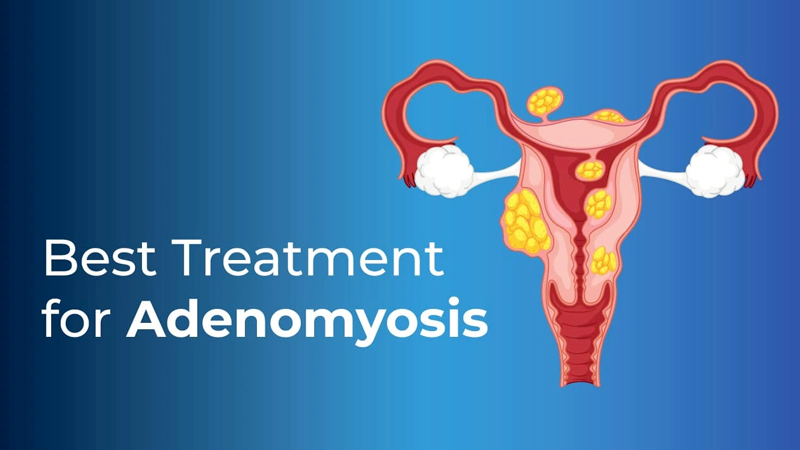
Adenomyosis (Bulky Uterus)
Adenomyosis is a condition where the inner lining of the uterus (endometrium) breaks through the muscle wall of the uterus (myometrium). This can cause the uterus to become enlarged, thickened, and "bulky." Adenomyosis can lead to heavy, prolonged menstrual bleeding, pelvic pain, and discomfort. Here's an overview of adenomyosis, including its causes, symptoms, diagnosis, and management:
Causes
The exact cause of adenomyosis is not well understood, but several factors may contribute to its development:
-
Hormones: Estrogen, the hormone that stimulates the growth of the uterine lining during the menstrual cycle, may play a role in the development of adenomyosis.
-
Inflammation: Inflammation within the uterus may lead to the migration of endometrial cells into the muscle wall.
-
Childbirth: Adenomyosis may develop after childbirth, possibly due to the trauma of labor and delivery.
-
Surgery: Previous uterine surgery, such as a cesarean section or myomectomy, may increase the risk of adenomyosis.
Symptoms
Adenomyosis may cause a range of symptoms, including:
-
Heavy Menstrual Bleeding: Excessive menstrual bleeding (menorrhagia) is a common symptom of adenomyosis.
-
Pelvic Pain: Dull, aching pelvic pain or discomfort, particularly during menstruation.
-
Menstrual Cramps: Severe menstrual cramps (dysmenorrhea) that may worsen over time.
-
Pelvic Pressure: A feeling of fullness or pressure in the pelvic area, often associated with an enlarged uterus.
-
Irregular Bleeding: Spotting or bleeding between periods (metrorrhagia) may occur.
Diagnosis
Adenomyosis can be challenging to diagnose because its symptoms overlap with other gynecological conditions. Diagnosis may involve:
-
Medical History: Your healthcare provider will ask about your symptoms, menstrual cycle, and medical history.
-
Pelvic Examination: A pelvic exam may reveal an enlarged, tender uterus.
-
Imaging Tests: Ultrasound, MRI, or other imaging tests may be used to visualize the uterus and detect abnormalities consistent with adenomyosis.
-
Biopsy: In some cases, a biopsy may be performed to confirm the presence of adenomyosis by examining tissue samples under a microscope.
Management
Treatment options for adenomyosis depend on the severity of symptoms, the woman's age, reproductive plans, and overall health. Treatment may include:
-
Pain Management: Over-the-counter pain relievers, such as nonsteroidal anti-inflammatory drugs (NSAIDs), to relieve menstrual cramps and discomfort.
-
Hormonal Therapies:
- Birth Control Pills: Oral contraceptives containing estrogen and progestin can help regulate menstrual bleeding and reduce symptoms.
- Hormonal IUD: A progesterone-releasing intrauterine device (IUD) can help reduce heavy menstrual bleeding and pelvic pain.
-
Surgical Treatments:
- Endometrial Ablation: A procedure to remove or destroy the uterine lining, which can help reduce menstrual bleeding.
- Hysterectomy: Surgical removal of the uterus, which is considered a definitive treatment for adenomyosis, especially in women who have completed childbearing or have severe symptoms that do not respond to other treatments.
Conclusion
Adenomyosis is a common gynecological condition characterized by the presence of endometrial tissue within the muscle wall of the uterus. While it can cause bothersome symptoms such as heavy menstrual bleeding and pelvic pain, there are various treatment options available to manage symptoms and improve quality of life. Women experiencing symptoms of adenomyosis should consult with a healthcare provider for proper evaluation and individualized treatment recommendations.
